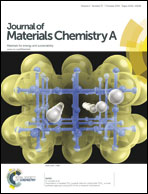Application of phenolic radicals for antioxidants, as active materials in batteries, magnetic materials and ligands for metal-complexes
Abstract
Organic radicals originating from phenolic compounds have been known for decades. The most well-known of these radical species are the phenoxyl-radical and the galvinoxyl-radical. Those radicals are characterized by the unpaired electron at a formerly phenolic oxygen-atom. In natural systems phenolic radicals are often found as intermediate products or as part of antioxidant and radical-scavenging processes. Tyrosyl-radicals or tocopherol-radicals represent typical examples. More reactive radicals like the hydroxyl-radical come in contact with these compounds and react to harmless water, while the radical is passed to the phenolic compound. Other radical scavengers in biological systems are, e.g., flavonoid molecules like catechin, luteolin and quercetin as well as resveratrol, vanillin or neurotransmitters like dopamine and epinephrine. In organic radical batteries phenoxyl-radicals or galvinoxyl-radicals can play a pivotal role as electroactive material to store electric energy. They are also often investigated for their magnetic properties, or their redox-activity when used in metal-complexes. From the tyrosyl-radical as part of enzymes to galvinoxyl as dopant in organic solar cells phenolic radicals display great versatility in structure and function. This review summarizes the application of phenol-based radicals in biological as well as artificial materials and systems over the last years.


 Please wait while we load your content...
Please wait while we load your content...